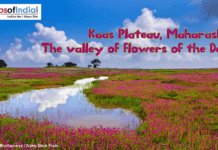The world is undergoing radical economic environment changes in the 21st century. The Western world hegemony is in contention and the emerging economies are taking centre stage, a situation that is redefining trade, finance, innovation and even geopolitics. States that were once considered peripheral in global matters (India, Brazil, China, Nigeria and Indonesia) are now starting to be heard in the world arena, and their rise is redefining the world map in not only one manner.
The Rise of Emerging Economies
Rapid industrialization, increasing per capita income, growing middle classes and growing integration into the global markets are some of the features of emerging economies. Although the term emerging implies that these countries are yet to mature, most are expanding at a pace that is higher than what is observed in the traditional economic giants. In a typical example, China and India, which together constitute more than 2.8 billion people, have emerged as drivers of world development, with their contribution to the world GDP and global trade being tremendous.
These economies are not only putting up great numbers, but they are also proving to be resilient and flexible. Nations such as Vietnam, Bangladesh, and Kenya have turned to be the centre of production, technology and services, which has attracted foreign capital and has formed new economic corridors that are greeting the old West-centric model.
Shifting Trade Dynamics
Among the most evident ways that are changing the world map, especially with emerging economies, is trade. The supply chains that have been globalized have redistributed the economic activity, with the production being transferred to areas with competitive labour and resources. This shift is typical of China, which is frequently referred to as the world factory. Likewise, India has emerged as a leader in information technology and services outsourcing, whereas Brazil and Argentina lead in agricultural exports.
These are not economic changes; these are geopolitical changes. The emerging economies are establishing alliances and trade relations without the input of the West. The BRICS (Brazil, Russia, India, China, South Africa) and regional trade agreements, including the African Continental Free Trade Area (AfCFTA), demonstrate how these states are leveraging their economies to attain diplomatic status.
Investment and Infrastructure Transformation
The world map is also being redefined by the emerging economies that are in the process of making huge infrastructural projects. A good example is the Belt and Road Initiative (BRI) in China, which has brought Asia, Africa and Europe closer due to its investments in ports, railways and energy developments. Trade is also realized through the network as well and the strategic power of the emerging countries is also boosted.
In the meantime, its infrastructures are changing, such as smart cities and high-speed railway lines, which are changing the scenario within the country and are thus turning it into an even more formidable country in terms of economic strength in the region. Other African States, such as Kenya and Ethiopia, are doing the same by making mammoth investments in their transport infrastructure, energy infrastructure, which is drawing foreign investors and thereby allowing them to enter the global economy at an accelerated rate.
Innovation and Technology Leapfrogging
The rise of the emerging economies is not only competing in the conventional industries; they are also entering high-tech industries. Mobile banking in Kenya, which is the M-Pesa innovation, has changed the concept of financial inclusion by providing services to millions of individuals who were not under formal banking systems in the past. India has the unicorns of fintech, health tech, e-commerce, and more, and the startup ecosystem in India shows that innovation can also be successful in a resource-constrained environment.
The fact that China has led in the world of artificial intelligence, electric vehicles, and renewable energy proves that emerging economies have ceased to be followers but rather they are rather the shapers of the future of technology. The effects of this technological dominance on the global supply chains, employment and international competitiveness have compelled the old players to review their strategies.
Cultural and Soft Power Influence
The economic force is usually converted into the cultural one, and the rising economies are becoming more and more influential in the creation of global culture and worldviews. The soft power of the countries is observed in Korean pop culture, Indian cinema, Brazilian sports, and Nigerian literature, which are becoming known all over the world. This propagation of culture strengthens their international dominance and confronts Western cultural dominance.
Moreover, the less developed economies are insisting on their views in international organizations. Countries like India, Brazil and South Africa are arguing about the nature of reforms they should make on organizations like the United Nations, World Bank and International Monetary Fund to depict the reality of the global economy of the 21st century.
Opportunities and Challenges
Despite the growth in the emerging economies, the economies are facing the exigent problems of income inequality, political instability, environmental problems and reliance on the global markets. Nevertheless, these countries also possess their advantages: there are youth, technological plasticity and the presence of massive natural resources and the augmented integration into the world systems. The way they cope with them will define their sustainability and transformative rise.
Redefining the World Map
The upcoming economies are ultimately redrawing the world map, not just geographically, but also economically, politically and culturally. The old order controlled by the Western powers is being replaced with a more multipolar world with influence all over the continents. The emerging economies are defining trade patterns, financial flows, centres of innovation, and even cultural trends, and therefore, they are at the core of a more interconnected and interdependent world than ever.
These countries are on the rise and their influence will be experienced in boardrooms, parliaments, research and marketplaces all over the world. The world map is a reflection of historical power no longer as a motionless mirror, but rather a changing landscape, which is being transformed by the rise of the emerging economies.





